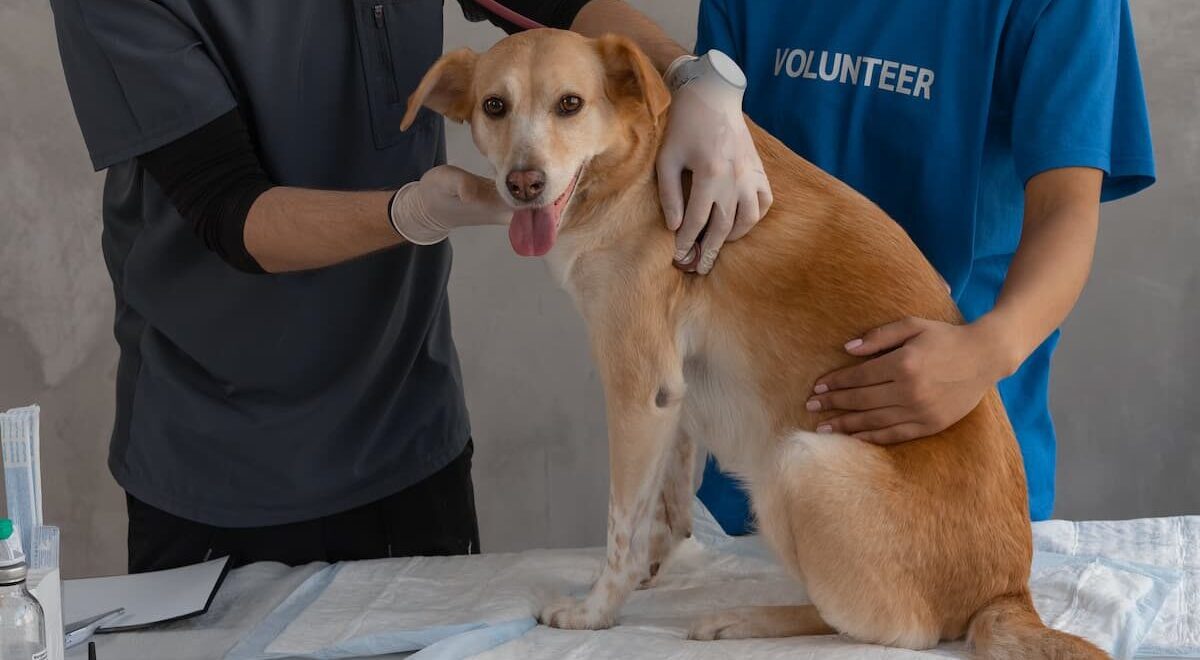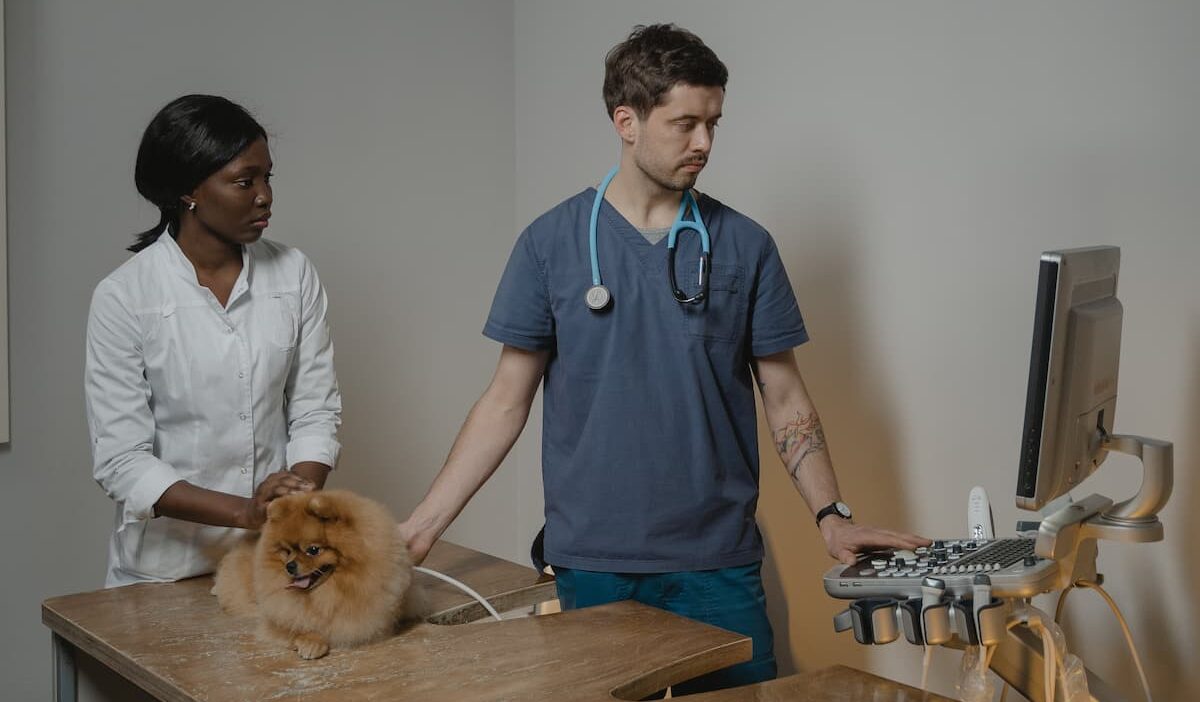Have you noticed your dog incessantly scratching a red, inflamed patch on their side?
Worried that they may be sick?
Read to answer the question: Why do dogs get hotspots?
Why Do Dogs Get Hotspots?
Hotspots, also known as acute moist dermatitis, are a common skin condition that affects dogs of all breeds and sizes.
These irritated and inflamed areas are often characterized by redness, hair loss, and intense scratching, making them incredibly uncomfortable for our furry companions.
But have you ever wondered why dogs are prone to developing hotspots?
Here are some potential causes for these hotspots.
One common cause of hotspots in dogs is excessive scratching and licking.
When a dog repeatedly scratches or licks a particular area, it can break the surface of the skin, creating an open wound.
This wound becomes susceptible to bacterial and fungal infections, leading to the development of hotspots.
Another one of the culprits behind the development of hotspots in dogs is the combination of heat and humidity.
When the weather gets hot and sticky, dogs can become more susceptible to skin irritations.
This is because the moisture and warmth create the perfect breeding ground for bacteria and yeast, which can then lead to the formation of hotspots.
Dogs with thick coats or those who spend a lot of time in wet environments are especially susceptible to hotspots.
Allergies are also a common trigger for hotspots.
Dogs can be sensitive to a range of allergens, including environmental factors like pollen, dust mites, and mold, as well as certain foods.
When a dog comes into contact with these allergens, it can lead to itching and irritation, causing them to scratch and potentially develop hotspots.
Additionally, poor grooming practices can contribute to hotspot development.
Dogs with thick or long coats may be more prone to hotspots, as their fur can trap moisture against the skin, creating the perfect environment for bacterial growth.
Fleas are another common issue that can lead to hotspots.
These tiny, blood-sucking pests can make a home on your dog, causing intense itching and irritation.
When a dog scratches and bites at these itchy flea bites, they can break the skin, leaving a wound that becomes a hotspot.
Proactive Measures to Keep Hotspots at Bay
As the saying goes, ”prevention is key,” and by taking proactive measures, we can keep hotspots at bay and ensure our canine companions are happy and healthy.
Proper nutrition, regular grooming, and flea prevention are all key to preventing hotspots from forming.
A well-balanced diet can strengthen a dog’s immune system, making them less prone to allergies.
Furthermore, identifying and managing your dog’s allergies through a process of elimination and working with your veterinarian can significantly reduce the likelihood of hotspots recurring.
Regular grooming and good hygiene practices are also essential in preventing hotspots.
Brushing your dog’s coat not only helps to remove loose hair and debris but also promotes healthy circulation and spreads natural oils that keep their skin moisturized.
Additionally, keeping your dog’s fur trimmed, especially in areas prone to matting, can help prevent moisture from trapping and reduce the risk of hotspots, while immediately drying your dog thoroughly after they get wet from swimming, bathing, or even just getting caught in the rain will ensure their fur won’t get too moist.
Regularly inspecting your dog’s skin can also help detect any signs of hotspots early on, allowing for prompt treatment and prevention of further complications.
And let’s not forget about flea prevention, as these tiny parasites are notorious for causing hotspots.
Regularly checking your dog for fleas and treating any infestations promptly can help reduce the chances of hotspots developing.
Additionally, using products specifically designed to repel ticks and fleas can help protect against bites that could lead to hotspots.
By being proactive and implementing these measures, we can create a safe and comfortable environment for our dogs, minimizing the occurrence of hotspots.
Remember, prevention is key, and a little extra care and attention go a long way in keeping our furry friends happy and free from discomfort.
So, let’s keep those hotspots at bay and ensure our dogs can continue to enjoy a healthy and vibrant life.
FAQ
Q: What exactly are hotspots?
A: Hotspots, also known as acute moist dermatitis, are red, inflamed spots that appear on a dog’s skin.
These pesky little patches can drive your pup absolutely bonkers!
Q: Why do hotspots occur in the first place?
A: Hotspots occur when your dog’s skin becomes irritated and itchy.
It could be a result of allergies, bug bites, or even a simple scratch that your furry buddy can’t resist!
Q: Can certain breeds be more prone to hotspots?
A: Absolutely!
Some breeds, like Golden Retrievers, Labradors, and German Shepherds, are more susceptible to hotspots due to their thick coats and heavy shedding.
But don’t worry, any dog can develop these itchy spots regardless of breed!
Q: Do hotspots have anything to do with the weather?
A: Interestingly enough, the name “hotspot” can be a bit misleading.
While hot weather could contribute to their creation, it’s actually the moist environment that really sparks these irritating patches.
So, even if you live in a cold or temperate climate, your furry buddy could still fall victim to them!
Q: How can I help prevent my dog from getting hotspots?
A: Great question!
To prevent hotspots, it’s important to keep your dog’s skin clean and dry.
Regular grooming, including brushing and bathing, can help remove excess hair and debris that may contribute to irritation.
Also, make sure to keep those pesky fleas and ticks away!
Q: What if my pup already has a hotspot?
How can I treat it?
A: If your dog already has a hotspot, it’s crucial to take action quickly.
The first step is to clean the affected area gently with a pet-friendly antiseptic or a mild, diluted iodine solution.
Then, apply a veterinarian-recommended topical treatment to help soothe the itchiness and promote healing.
In severe cases, your vet may prescribe oral medications or recommend a visit to their clinic for professional care.
Q: Are there any natural remedies I can try?
A: While natural remedies can provide some relief, it’s important to consult with your veterinarian before trying anything new.
They can guide you on which remedies might be safe and effective for your furry friend’s specific case.
Q: Can I do anything to stop my dog from scratching the hotspot?
A: Yes!
It’s essential to prevent your dog from scratching or licking the hotspot because that can worsen the condition and lead to infection.
Using an Elizabethan collar (the famous “cone of shame”) or providing your pooch with a snug-fitting, canine-specific shirt can help deter them from scratching.
Q: Are there any long-term solutions to prevent recurring hotspots?
A: To prevent hotspots from reoccurring, it’s crucial to address the underlying cause.
Regular flea and tick prevention, maintaining a healthy diet, and always keeping your dog’s skin clean and dry are your best bets.
If your furry companion experiences frequent hotspots, consult with your veterinarian to investigate any potential allergies or other underlying health issues that may need attention.
Q: Can hotspots be a sign of something more serious?
A: In some cases, hotspots can be a symptom of an underlying health issue, such as allergies, hormonal imbalances, or skin infections.
If you notice persistent hotspots or they keep returning, it’s best to consult with your vet for a thorough examination and proper diagnosis.
Q: Are hotspots only uncomfortable for dogs, or can they be harmful?
A: Hotspots themselves are not typically harmful, but prolonged scratching and biting can lead to secondary infections or skin damage.
That’s why it’s crucial to get your pup checked by a veterinarian if you notice any signs of discomfort or the hotspot isn’t improving.
Q: Is there anything else I should concern about hotspots in dogs?
A: Just remember, hotspots can happen to any pup, regardless of breed or climate.
Being proactive in preventing hotspots, addressing them promptly when they occur, and seeking professional guidance when needed are the best ways to keep your furry friend happy, healthy, and itch-free!
Key Takeaways
From allergies to fleas, moisture to anxiety, our furry friends can fall victim to a barrage of factors that result in these uncomfortable skin irritations.
But fear not, for armed with this knowledge, we can take proactive steps to prevent and treat hotspots in our canine companions.
Regular grooming, a balanced diet, and flea control are just a few weapons in our arsenal.
Providing a stress-free environment and addressing any underlying health issues are also crucial in keeping these pesky hotspots at bay.
Remember, prevention is key!
Keeping our pups cool and dry, monitoring their behaviors, and maintaining their overall well-being can make all the difference.
And if hotspots do rear their ugly heads, quick action and veterinary guidance are essential to ensure your furry friend’s swift recovery.
Let’s always keep our eyes peeled for any signs of redness, swelling, or incessant scratching.
By keeping a watchful eye, taking preventative measures, and seeking proper care, we can keep our four-legged buddies itch-free and wagging their tails in delight.
So, keep those canine companions happy, healthy, and hotspot-free!
Until next time, take care of your furry friends and remember, a little love and attention can go a long way in keeping their skin irritation-free.













